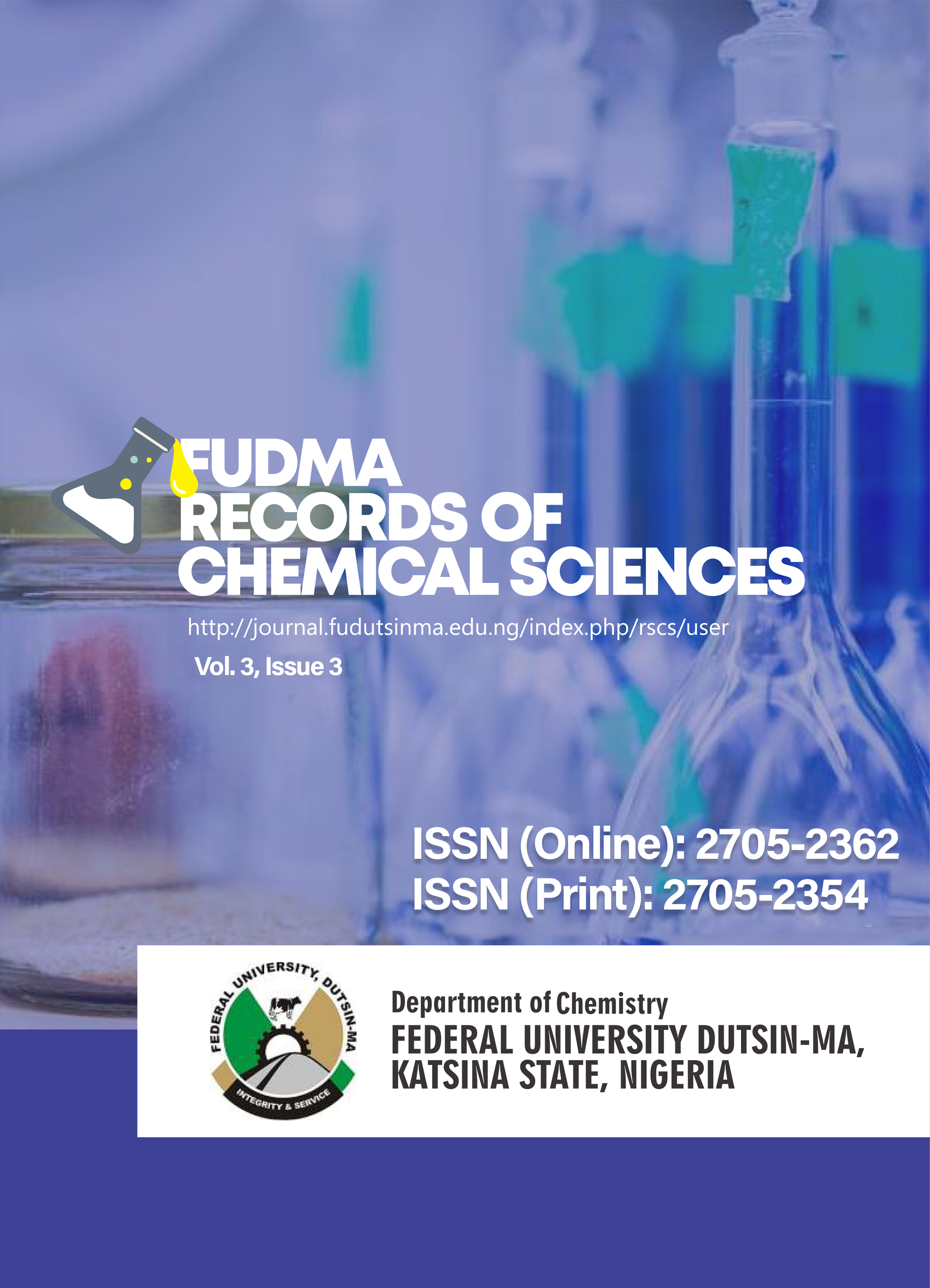Comparative Study of the Effect of Preservation Methods on Lycopene and Mineral Contents in Tomatoes Sold Within Kaduna Metropolis.
DOI:
https://doi.org/10.33003/Keywords:
Antioxidant, Minerals, Lycophene, Preservation, TomatoesAbstract
This study aimed to compare the effects of various preservation methods on the lycopene and mineral
element content of tomatoes sold in the Kaduna metropolis. Lycopene analysis was performed using a
UV/Visible spectrophotometer at 503 nm, with extracts prepared in hexane: acetone: ethanol mixture.
Lycopene and mineral element concentrations were measured in mg/100 g and mg/kg, respectively.
Tomato samples (Derika VF) were sourced from Kawo, Central, and Barnawa markets. The
preservation methods tested included boiling in a glass container (BIG), boiling in a plastic container
(BIP), air drying, and the use of chemical preservatives. Results indicated that the average lycopene
concentration in fresh tomatoes was 5.89 mg/100 g, while the concentrations of mineral elements were
as follows’ K, Na, Ca, Mg, Zn, and Fe were 247.99 mg/kg, 426.87 mg/kg, 30.65 mg/kg, 109.50 mg/kg,
1.670 mg/kg and 2.9 mg/kg respectively. In the preserved samples, the concentrations of lycopene
ranged from 5.70 mg/ 100 g - 7.401 mg/100 g in BIP, 5.767 mg/ 100 g - 7.434 mg/100 g in BIG, 5.67
mg/100 g - 7.897 mg/100 g in dried tomato and 5.718 mg/100 g - 7.561 mg/100 g in chemically
preserved tomatoes from day 1 - day 28 respectively. This indicates that dried tomato has the highest
lycopene content. For mineral elements, the concentration of potassium (288.16 mg/kg) and sodium
(812 mg/kg) were higher in the chemically preserved sample and BIP had the highest concentration of
zinc (63.50 mg/kg). Concentrations of iron (626 mg/kg) and calcium (728.12 mg/kg) were higher in
BIG, while the concentration of magnesium in BIP and dried tomatoes where the same (118.38 mg/kg).
However, there was a good distribution of minerals in each method of preservation. This indicates that
all the methods of preservation are suitable for lycopene and mineral elements.






